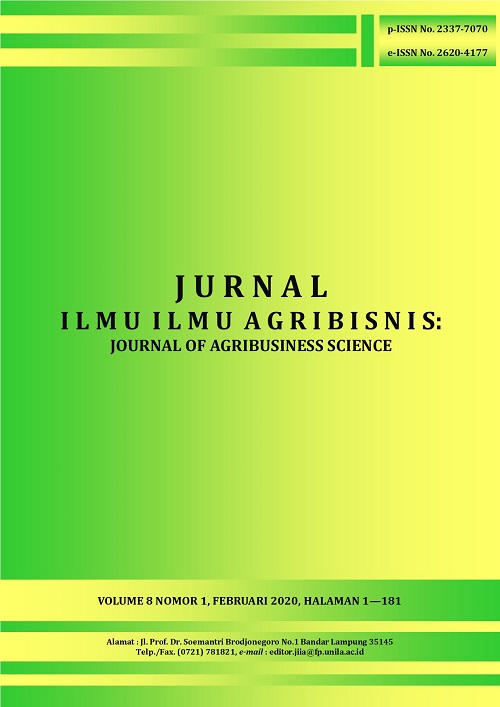EVALUASI KELAYAKAN FINANSIAL DAN KEUNTUNGAN PETERNAKAN AYAM RAS PETELUR PT SPU DAN AF DI KECAMATAN JATI AGUNG KABUPATEN LAMPUNG SELATAN
DOI:
https://doi.org/10.23960/jiia.v8i1.4354 Abstract View: 943
Abstract View: 943
Abstract
This research aims to know the financial feasibility evaluation and profitability at PT. SPU and AF in Jati Agung Sub-district of South Lampung Regency. This research location was selected purposively. The data was collected in October - December 2018. The research method used was comparative study. This
research compares between PT SPU with AF. The respondents include the owners of each layer farm. The data analysis method used was qualitative and quantitative descriptive analysis. The data analysis using profit analysis, Internal Rate of Return (IRR), Net Present Value (NPV), Payback Period (PP), Gross Benefit Cost Ratio (Gross B/C), Net Benefit Cost Ratio (Net B/C).with interest rate of 9 percent. The result showed that PT SPU and AF was profitable and can con continue to be developed. Financially, the business is still viable because the NPV and Net B/C is higher than 1, and the value of IRR is higher than the interest rate.
Key words: agribusiness system, layer, profit
Downloads
Downloads
Published
How to Cite
Issue
Section
License
Authors who publish with this journal agree to the following terms:
Authors retain copyright and grant the journal right of first publication with the work simultaneously licensed under a Creative Commons Attribution License that allows others to share the work with an acknowledgement of the work's authorship and initial publication in this journal.
Authors are able to enter into separate, additional contractual arrangements for the non-exclusive distribution of the journal's published version of the work (e.g., post it to an institutional repository or publish it in a book), with an acknowledgement of its initial publication in this journal.
Authors are permitted and encouraged to post their work online (e.g., in institutional repositories or on their website) prior to and during the submission process, as it can lead to productive exchanges, as well as earlier and greater citation of published work (See The Effect of Open Access).














